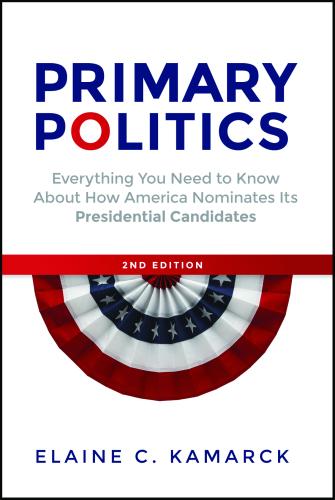The 2018 midterms began this week with primary contests in Texas. As the year goes on, these elections will tell us a great deal about the future of American politics in both parties which is why, here at Brookings, we are studying every congressional candidate in every congressional primary. We’ve done this study twice before and both times, it has told us a great deal about what is happening within the two very large tents we call American political parties.
Midterms are often interpreted as referendums on the incumbent president, and this year will be no exception. Given the extraordinary nature of the Trump presidency, there is a great deal of interest in reading the tea leaves that a midterm season yields. One early piece of evidence is the fact that turnout in the Texas primaries was the highest it has ever been in a non-presidential year—a likely indication of high voter interest and mobilization to come. However, while Democrats improved their share of the vote, there were still more Republican voters that showed up to the polls.
Not only did a record number of women run in Texas, a record number won their primary or advanced to a runoff primary election.
As expected, the number of women running for office has surged in 2018—and Texas is no exception. Not only did a record number of women run in Texas, a record number won their primary or advanced to a runoff primary election. As the following graph illustrates, compared to 2014, women more than tripled as a share of all primary winners (or runoff contenders). If this trend continues in the subsequent primary states, the women’s energy we have been seeing since the march on Inauguration weekend in 2017 could be transformative.
Another dynamic that we analyze in our studies of primaries is ideological division within each political party. We do this by coding the websites of every candidate who files with their state’s Secretary of State Office and who gets himself or herself on the primary ballot. On the Democratic side, in Texas, there appears to be an upsurge in self-identified progressive candidates compared to the previous two election years. If this trend keeps up in other states, it will be an indication that Bernie Sanders’ presidential campaign and the activism it inspired is having an impact on the Democratic Party.
Not only are more self-identified progressives running in Texas this year but they are doing fairly well. As the following table indicates, about 40 percent of all the progressive non-incumbents running in Texas won the primary or advanced to a runoff, similar to the number of establishment Democrats who won or advanced to a runoff. However, we should note that progressive candidates were not uniformly distributed across the Lone Star State. Eleven Democratic primaries featured two or more progressives vying for their party’s nomination—five of whom were battling for a chance to take on Rep. Mike McCaul (R-10) this November.
| Democratic Party Category | Win | Adv. to Runoff | Lose |
|---|---|---|---|
| Establishment | 9 (17.6%) |
10 (19.6%) |
32 (62.7%) |
| Moderate | 1 (20%) |
0 (0%) |
4 (80%) |
| Progressive | 5 (12.8%) |
11 (28.2%) |
23 (59.0%) |
Election Results Source: Politico (Preliminary Results)
The most notable feature of the Republican House primary candidates is the large decrease in self-identified Tea Party supporters. In 2014, the first year we began studying primary contestants, the Tea Party was the largest faction. By 2016, their numbers had dwindled. In 2018, that trend continued, as did the uptick in the number of conservative candidates that began in 2016 and continued into 2018.
As we noted in 2016, to a certain extent, the label “conservative” seemed to usurp the Tea Party label. In the recent Texas primaries, self-identified conservatives seemed to perform better than business/establishment Republicans, with 15 such candidates winning or advancing to a runoff. However, in many districts, conservatives were running against one another, so the following table does not tell as straightforward of a story as it first appears. Nine Republican primaries featured two or more conservative Republicans and there were eleven conservatives in one Republican primary alone—the race for retiring Rep. Lamar Smith’s seat.
| Republican Party Category | Win | Adv. to Runoff | Lose |
|---|---|---|---|
| Business/Establishment | 3 (15.8%) |
0 (0%) |
16 (84.2%) |
| Conservative | 3 (6.2%) |
12 (25%) |
33 (68.7%) |
| Tea Party | 0 (0%) |
1 (14.3%) |
6 (85.7%) |
Election Results Source: Politico (Preliminary Results)
A word of caution to the reader: these are results from Texas only. We won’t have a complete picture until September when the last states hold their primaries. In the meantime, turnout could continue to surge in subsequent primaries or it could fall back to more traditional levels. Women candidates could continue to win or not. Progressives and conservatives could do well in the primaries but then cost their respective parties losses in the general election—as some Tea Party candidates did in 2010. Our goal is to follow this story and tell as much of it as our data allow.





Commentary
What do the Texas primary elections tell us? For one, women are running—and winning
March 7, 2018